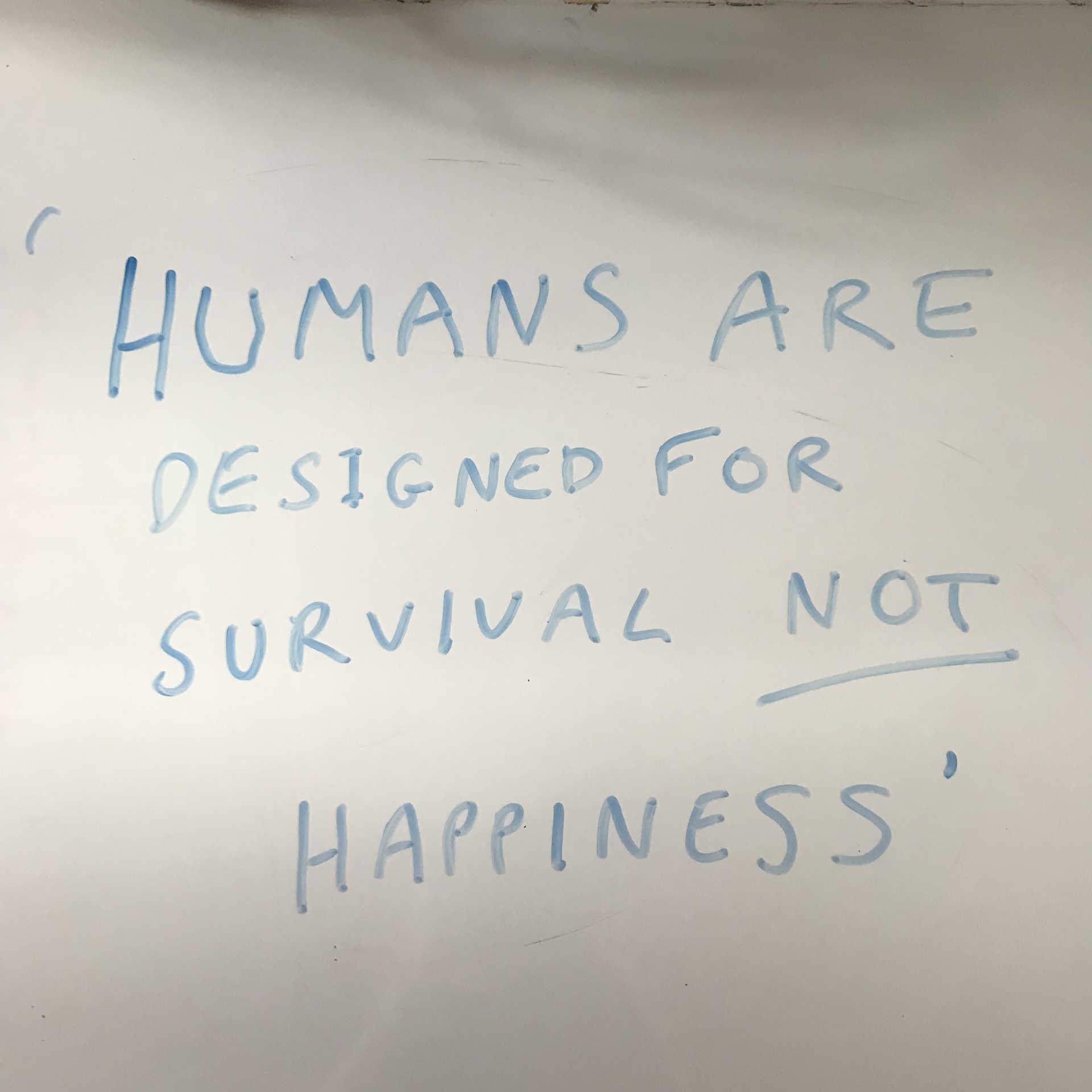
‘Humans are not designed to be happy, or even content. Instead, we are designed primarily to survive and reproduce, like every other creature in the natural world. A state of contentment is discouraged by nature because it would lower our guard against possible threats to our survival.’
Rafael Euba, Consultant Psychiatrist
In other words, we humans have evolved to prioritise survival over happiness. And according to neuroscientist Sophie Scott, almost all perception is about detecting change. Combine these two insights, and you have the business model of the media: making money out of our craving for news – especially about emerging threats. That old newsroom adage “If it bleeds, it leads” says it all.
As a chronic depressive, I have been on intimate terms with the brain’s negativity bias for the past 15 years. And yet, I still got an abrupt reminder of its power when I recently prepped two CEOs for top-tier international media interviews.
Both had constructive messages and were told to be disciplined and not indulge negative lines of questioning.
But, despite behaving themselves, the headlines that came out were all about losses, damage and threats.
The quotes and headlines were extrapolations of what the CEOs actually said i.e. the journalist (or, more likely, the headline writer) put two and two together and came out with 15. But it gives a flavour of how disciplined you have to be to counterbalance a persistent, negative media narrative. Especially if you are the centre of a story.
The media abhors a vacuum
By now you’re probably asking why on earth should I bother to talk to the media if they are just going to stitch me up?
Because the media abhors a vacuum – especially in this age of 24 hours rolling news and social media. If your sector of business is attracting media interest but you’re not part of it, you don’t have a hope of affecting the coverage.
Getting your story out is essential for counterbalancing if not correcting false or unfavourable impressions.
So, what can spokespeople and their comms leads do to manage the negativity bias?
1. Adopt a realistic but strategic mindset to media interviews
- Accept that doing media interviews is a percentage game. Not even the world’s top chess players expect to win every match, especially when there are so many variables in the mix. But they can count on doing better than those who don’t play – or don’t know how to. Spokespeople can’t control the journalist, but they can acquire skills that tilt the odds of success strongly in their favour (yes, it’s called media training). So step up to the challenge. Be brave. What are you, a cucumber?
- Don’t say yes to every media interview just because journalists ask. Be strategic about who you will talk to, your objectives and what kind of hearing/coverage you can legitimately expect to get. If you don’t think you can get your side of the story across, don’t do the interview.
- Remember that an interview is not a conversation. It’s a highly structured exchange that could get you into public trouble if you say something that gets quoted out of context.
2. Interview control starts with a proactive story
- Have a really tight brief i.e., set strict parameters on what you will talk about and what you won’t. The idea is to demarcate your proactive story as something distinct from the tough or sensitive questions that require carefully controlled responses.
- Prepare and rehearse your proactive compelling story until it’s embedded in your short-term memory and on the tip of your tongue. NB: the proactive story should not be built out of pre-emptive rebuttals to possible criticism or prevailing media tropes. You will just reinforce negative frames. This happens a lot when organisations in Brussels need to manage an issue. They spend too much time rebutting it.
- Check your language for tone. Ask someone you trust if you sound defensive. Comb out those words if you do.
- Prepare more supporting examples (real-life or hypothetical) than you think you will need. Don’t offer them up all at once but keep some in reserve as they can help get you out of tight spots.
- Read but don’t inhale the 85-page Q&A document. You will go insane if you try to memorise it and it will encourage you to be defensive, not proactive. While you should definitely read the responses to the hottest questions and positions, it’s more important to develop the muscle for dealing with them than learning the reactive line off by heart (see point below).
- Practise the techniques that will help you keep control during the interview (no I’m not going to tell you what they are, you have to come to training for that).
3. How to stay in control during a media interview
- Slow down and speak at a pace that feels artificially slow to you.
- Think before you answer. Especially if a question seems mischievous to you.
- Don’t claim knowledge you don’t have – and never lie.
- Don’t get angry, particularly if you are interrupted. If you haven’t finish making a crucial point, simply say “…sorry, just to finish that point”.
- Get comfortable with the idea that you may need to close down more questions than you would in a normal conversation or less charged interview.
- Make sure you have a neutral expression when listening to the journalist, especially if the interview is being filmed, which many non-TV ones now are.
- Don’t indulge negative questioning. If they ask you something provocative, don’t amplify it by repeating or denying the claim. What seems like a reasonable response in conversation could be a horror show when quoted out of context.
- Don’t pass GO and don’t collect $200. (Ok, so you can discard that last piece of advice but was just checking to see if you were still reading).
